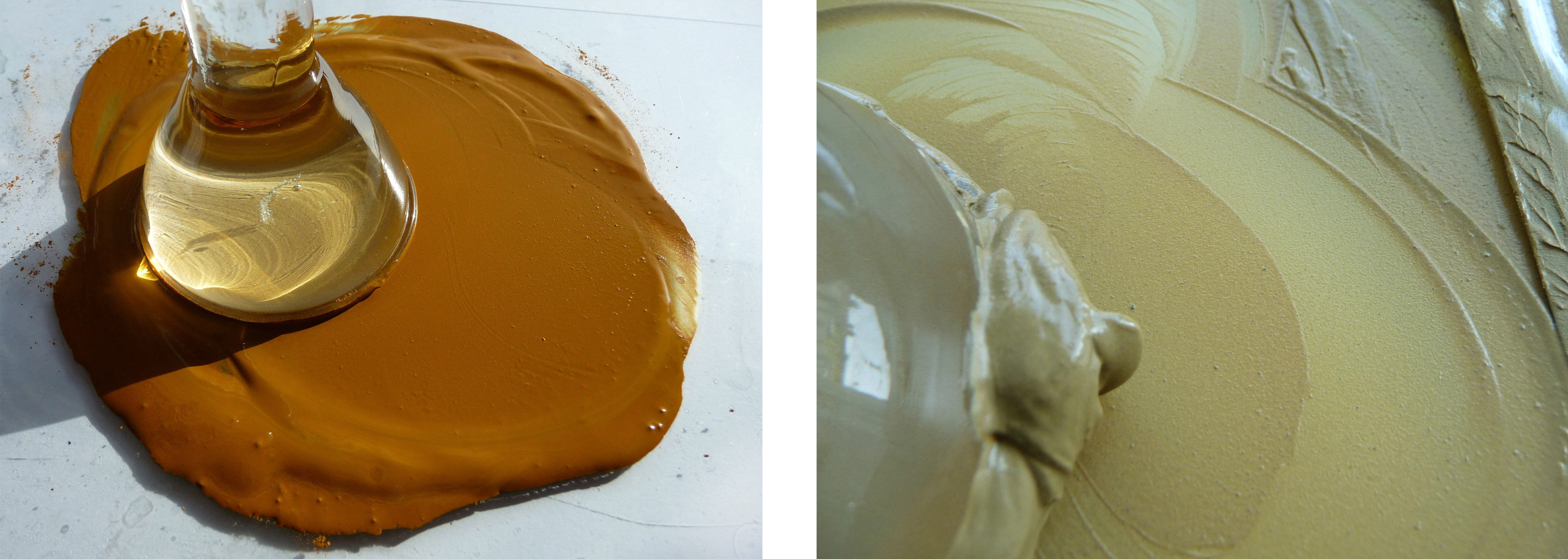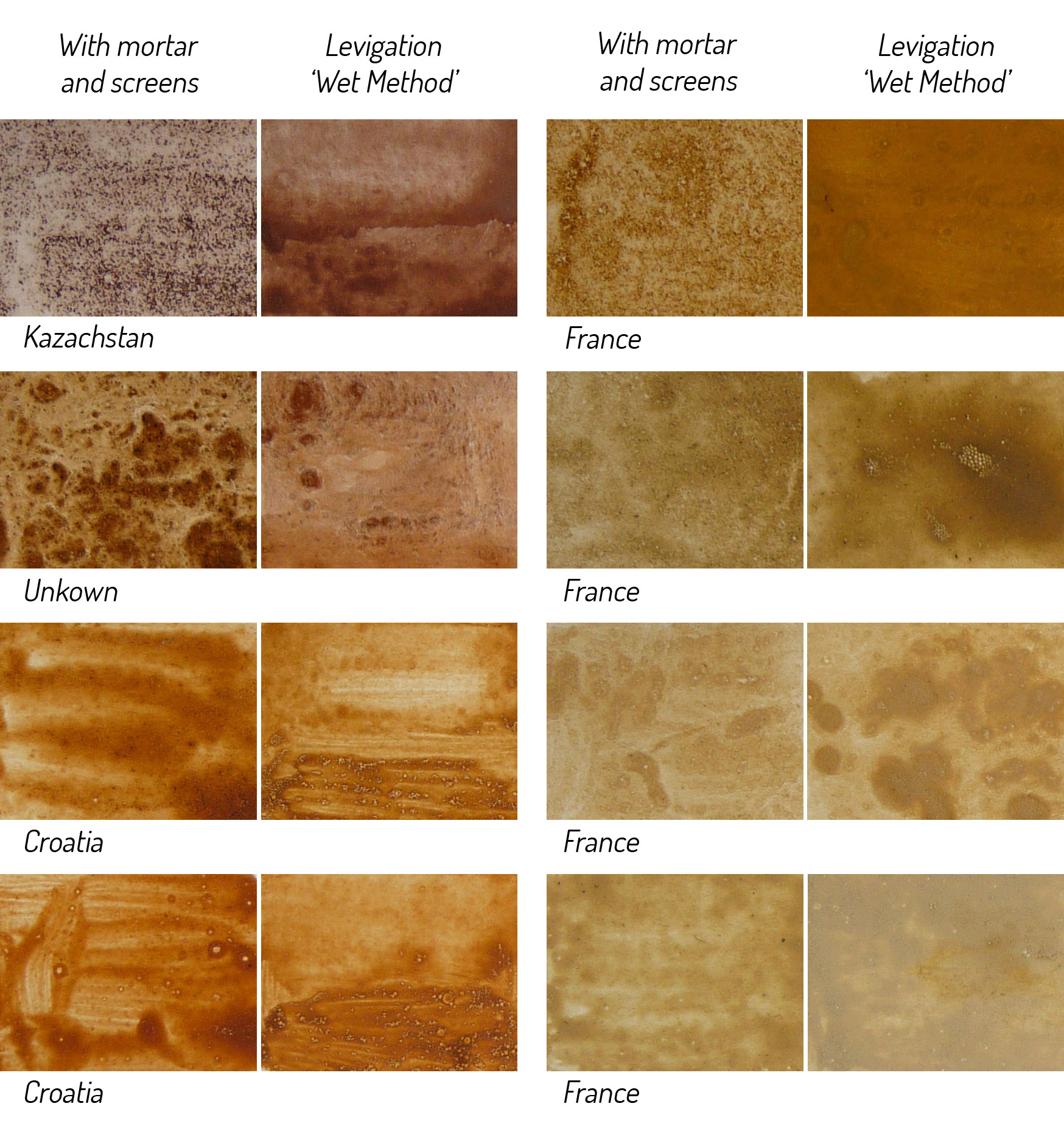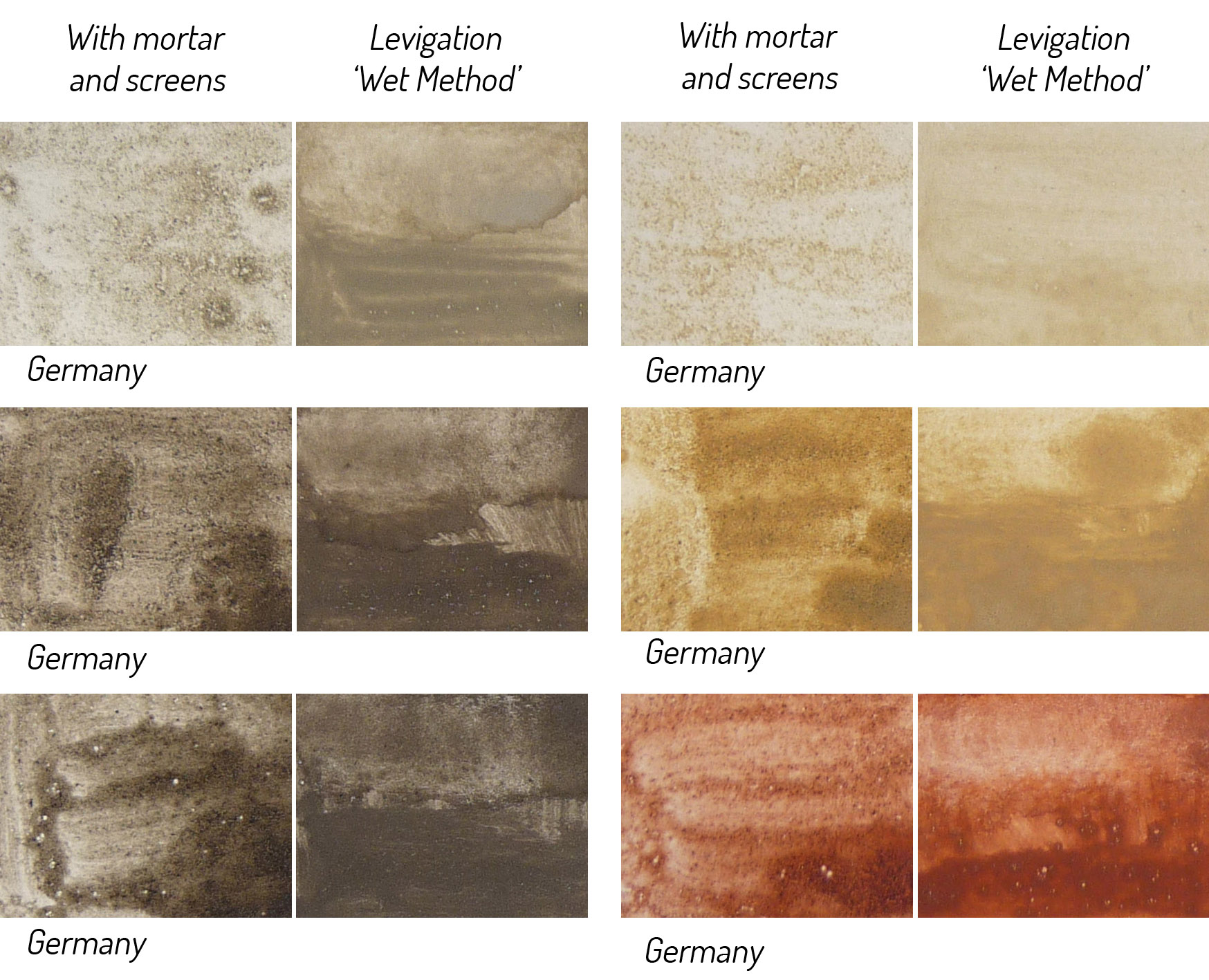Project: Making Earth Pigments
I’m addicted to pigments since I’ve learned how to make my own paint. In particular the earth pigments. I learned that making earth pigments is not very difficult. Especially the idea that I can use pigments from locations that I visited, motivated me to try it myself. When I started I got others excited and I received clay and rocks in nice colors from friends and family. Now I have pigments from Croatia, France, Germany, Cameroon and Kazakhstan!
I like to share the process with you:
I learned it’s not a difficult process, but it takes time so you need to be patient.
The first step is, obviously, collecting the clay or rocks:

Then grinding the dry clay/soil or rocks with the mortar:
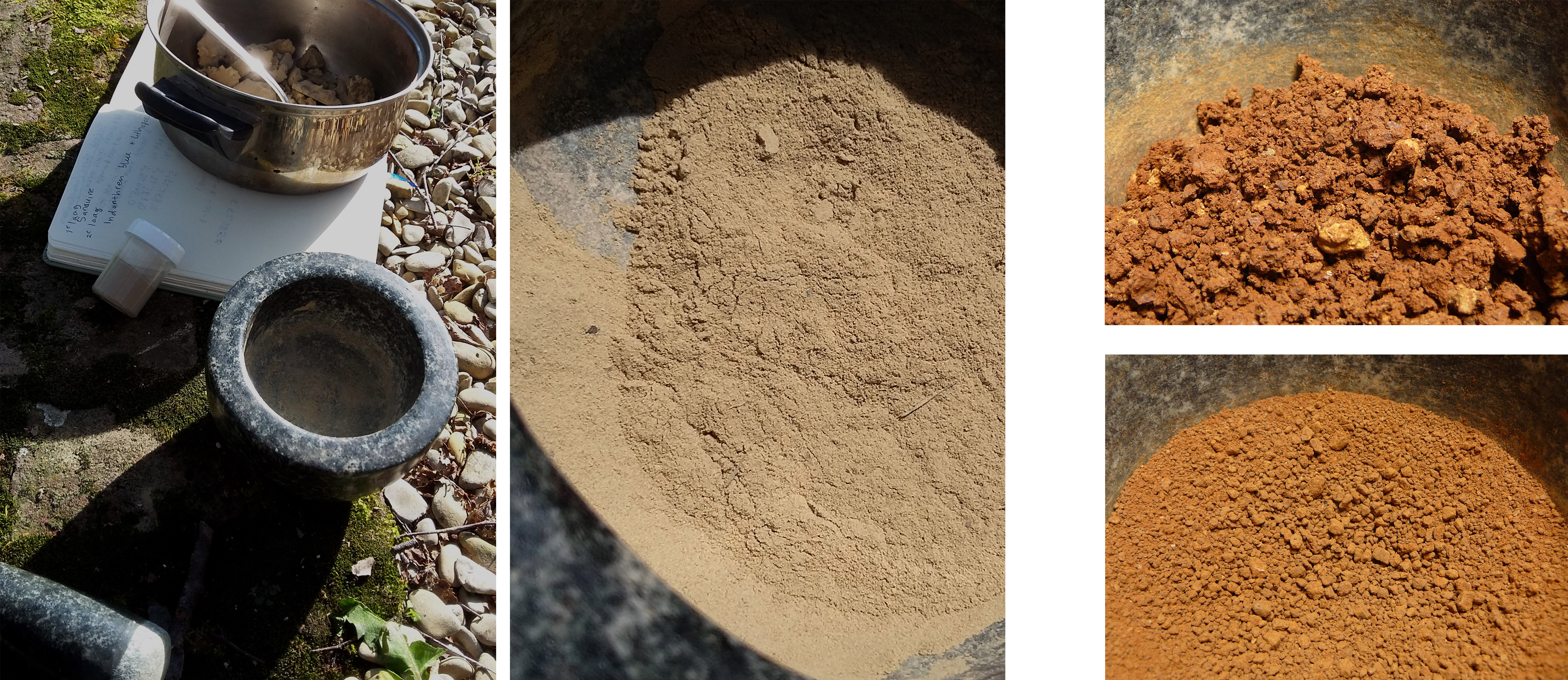
After grinding, I use a coarse screen: And after the fine screen it looks like this:
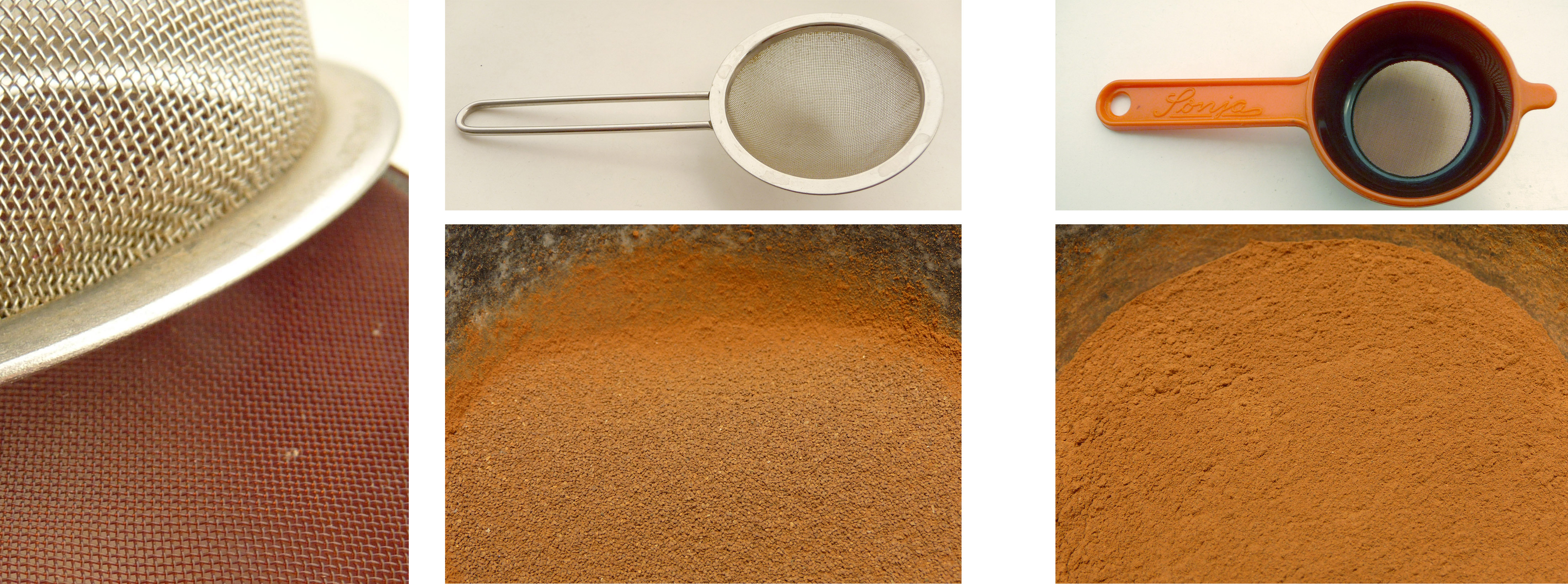
To produce a finer pigment I used levigation or the ‘wet method’:
Put the rough pigment into a glass jar with about six times more water.
Then stir and let it sit for a few seconds; the heavy stuff will sink to the bottom. Now pour the water in a second jar. Only the light and small parts are in this jar. Now you wait till everything is settled down.
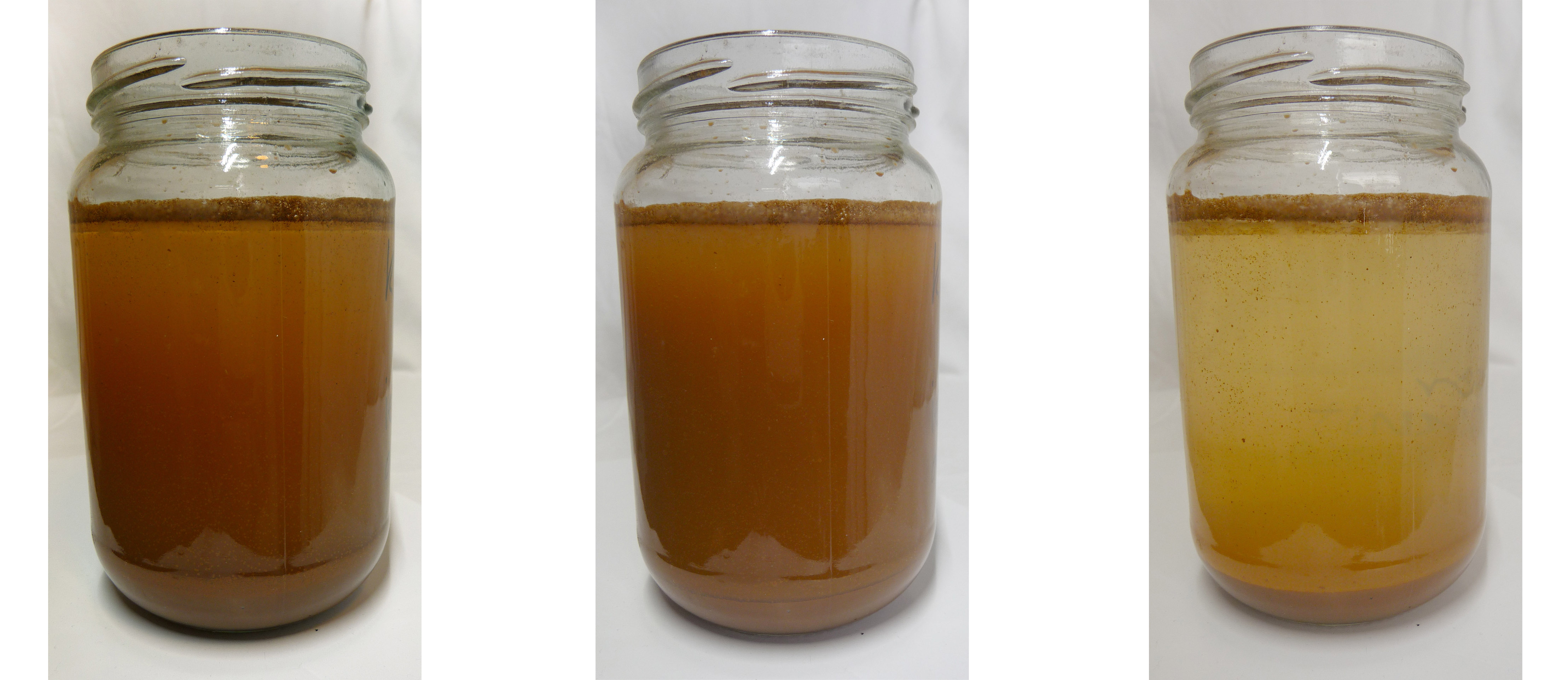
I learned from a book [ Earthen pigments from Sandy Webster ] to pour off the water until only the pigment is left on the bottom, but I don’t want to risk to lose some fine pigment by doing that. With a syringe I take the water out. For the last part I use a pipette because I can use it more gently.
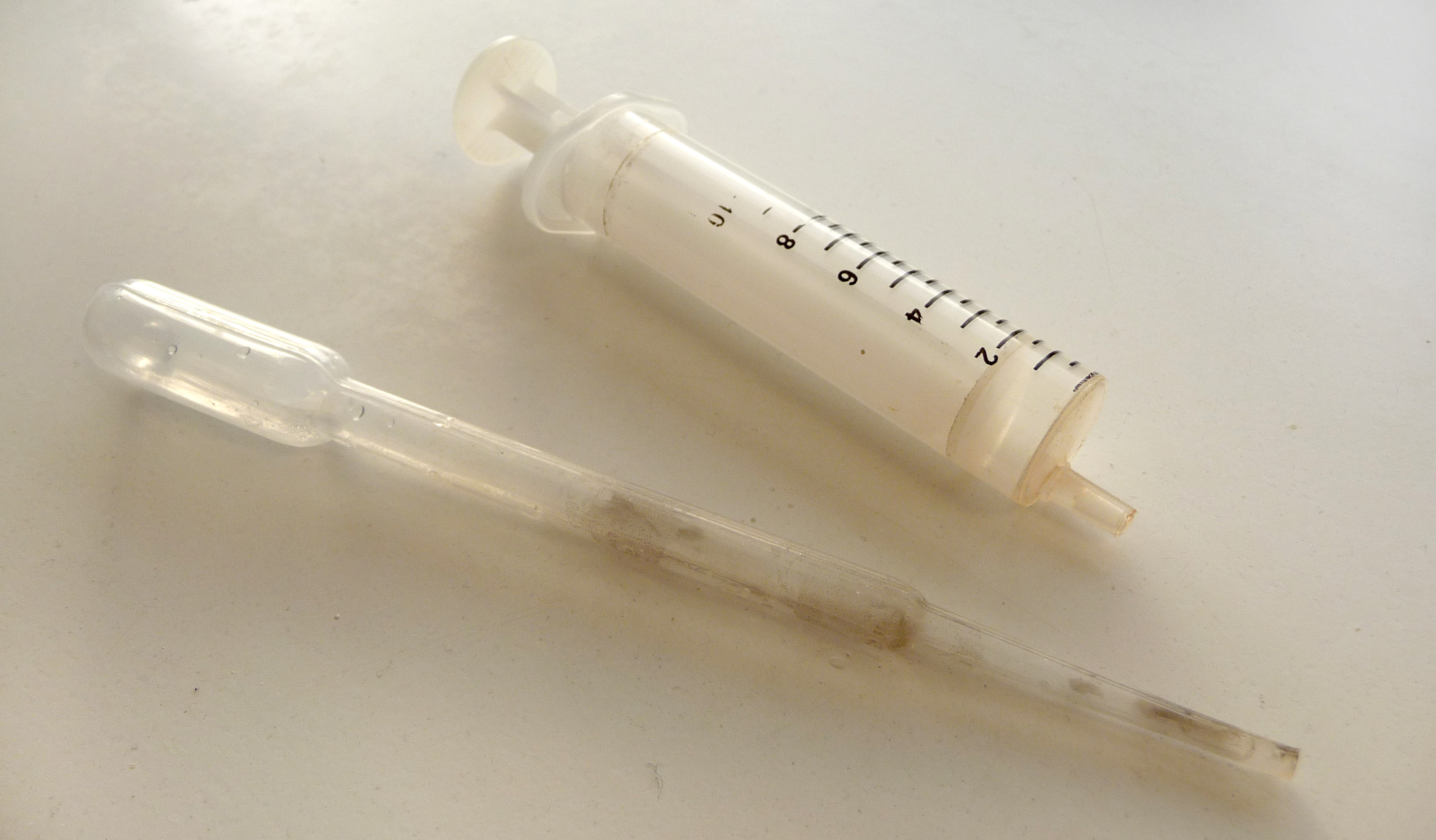
Now there is a small layer of water at the bottom that has to be removed. I let the water evaporate by putting the jars on my wood stove. I’m not losing any pigment this way.
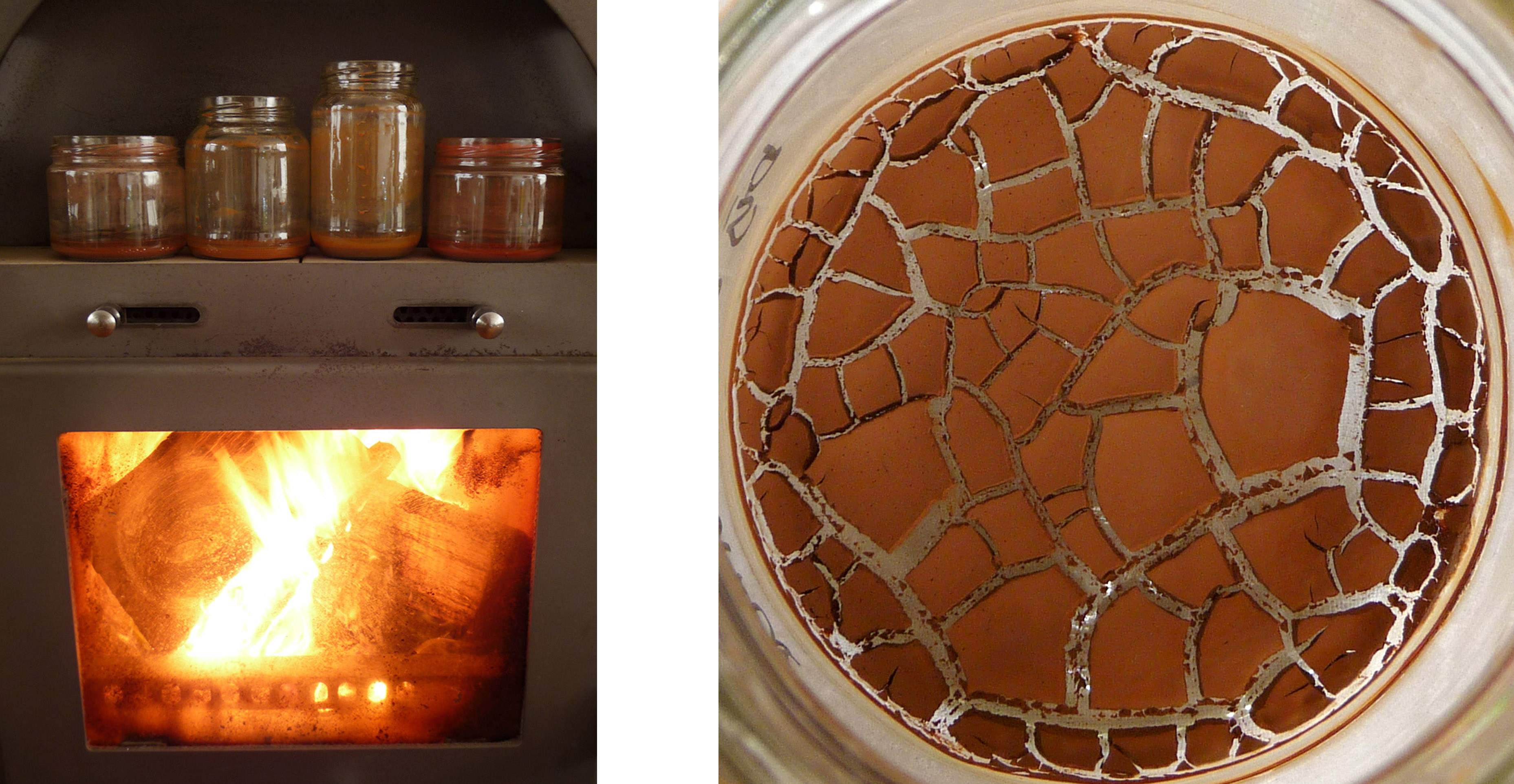
When it’s dry I can grind it again or make a pigment paste. I prefer the dry form because with the wet form there’s a chance of molding and I can’t use it for oil paint.
